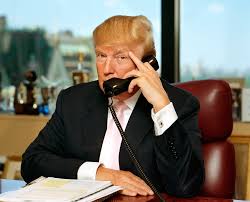23 Jan 2025 Indian Express Editorial
What to Read in The Hindu Editorial( Topic and Syllabus wise)
Editorial 1 : Reform With Consent
Context: Agricultural reforms must have the farmers’ consent
Background
- The current farmer agitation follows the successful 2020–2021 (Samyukta Kisan Morcha) SKM-led protests that resulted in the repeal of the three contentious farm laws.
- The current agitation is led by Jagjit Singh Dallewal.
- Dallewal started a hunger strike in November 2024, coinciding with the rollout of the National Policy Framework on agricultural marketing, perceived as a backdoor attempt to reintroduce the repealed farm laws.
- The fast ended on January 14, 2025, after Dallewal accepted the central government’s offer for talks.
Involvement of Various Groups
- Bharatiya Kisan Union (BKU) (Sidhupur) and Kisan Mazdoor Sangharsh Committee (KMSC) have been central to the agitation, while the original SKM remains aloof.
- Differences between the SKM and newer groups like SKM (non-political) have created challenges in achieving unity.
- Recent unity talks culminated in the SKM announcing a nationwide tractor march on January 26, 2025.
Demands of the Protesters
- 13-Point Charter of Demands (it includes)
- Legal Guarantee of MSP: Based on the Swaminathan Panel’s formula.
- Farm Loan Waiver: Total exemption of outstanding debts.
- Monthly Pension: Rs. 10,000 for farmers above 60 years of age.
- WTO Withdrawal: India to exit agreements detrimental to farmers.
- Debate on MSP
- Supporters’ View: Legal MSP guarantees fair remuneration, encouraging crop diversification.
- Critics’ View
- May result in a quota-based procurement system, restricting the purchase of wheat and paddy.
- Could adversely affect Punjab’s agrarian economy.
Challenges and Divisions
- Public Perception
- Unlike the earlier SKM-led agitation, this protest has struggled to gain widespread urban support.
- The December 30 bandh faced resistance from traders, indicating limited backing outside rural areas.
- Role of Women: Women, a pivotal force in the earlier SKM protests, have played a minimal role this time.
- Political Undercurrents
- Farmers’ unions accuse political forces of exploiting their cause.
- Successive governments have failed to implement crop diversification despite repeated promises.
Structural Issues in Punjab's Agriculture
- Overdependence on Paddy
- Punjab’s agriculture remains reliant on water-intensive paddy, leading to ecological strain.
- Lack of investment in cold chains, food processing units, and Farmer Producer Organisations (FPOs).
- Stubble Burning: The annual issue of stubble burning continues, with no viable alternatives provided to farmers.
Way Forward and Conclusion
- Talks scheduled for February 14 aim to address the farmers’ demands, especially the MSP guarantee.
Conclusion: Need for Agricultural Reforms – All stakeholders agree on the need for reforms, but farmers’ consent is critical to ensuring successful implementation.
Editorial 2 : Doing Business with Trump
Context: How India can do business with Trump’s America
Introduction: “Golden Age of America” under Trump
- President Donald Trump’s leadership ushered in an aggressive "America First" trade policy aimed at reducing the US trade deficit.
- China, Mexico, and Canada were initially the focus, but space for dialogue and adjustment was left open.
- India’s position in US trade is significant but not central, ranking ninth with a trade surplus of $33 billion.
US Trade Deficit
- Total deficit: $1.05 trillion.
- Top contributors:
- China: 30% ($318 billion).
- Mexico: 19%.
- EU: 16%.
- Canada: 15%.
- India: 3.2% share, with a surplus of $33 billion.
Sectoral Trade Analysis with India
- Primary Goods: Imports of primary goods from the US stand at $13 billion, while exports are at less than a billion.
- Consumption Goods: India’s imports stand at $2 billion while exports are at $27 billion.
- Capital Goods: US exports capital goods worth $6 billion while its imports from India stand at $8 billion.
Emerging Trade Strategies and Challenges
- US Quadrennial Supply Chain Review 2023
- Focus on countering Non-Market Policies and Practices (NMPP) of China.
- Highlights traceability in trade to address third-party targeting of the US economy.
- Recommendations
- Amendments to Article 301 and Article 201 for stronger circumvention procedures.
- Pooling resources of Treasury, Commerce, and Homeland Security for external revenue management.
- Potential Implications for India
- Risk of dumping in Indian markets due to China-US trade war.
- Indian exports, especially to Africa, may face challenges due to production shifts in China.
Services Sector and the H-1B Visa Issue
- India’s Position: India has a dominant position in the US services sector, relying heavily on H-1B visas.
- 72% of H-1B visas are granted to Indians (compared to 12% for China).
- Challenges
- Outdated service delivery models, with limited future benefits from traditional BPO setups.
- Emerging restrictions on fields like synthetic biology and AI.
- Indian Government's Efforts
- Simplification of the H-1B visa process.
- Advocacy for an increased student quota to strengthen educational and professional ties.
Indo-Pacific Economic Framework for Prosperity (IPEF)
- India has agreed to three verticals in the IPEF:
- Supply chains
- Clean energy, decarbonisation, and infrastructure
- Tax and anti-corruption
- This paves the way for a calibrated free trade agreement with the US.
- Supply chain stability has been identified as a priority by the Trump administration.
Way Forward: Opportunities for Strengthening India-US Trade Relations
- Cross-Sectoral Collaboration
- Trade relations should integrate investment, technology, and finance for a comprehensive partnership.
- Establishment of institutional mechanisms at the highest level for ensuring convergence across sectors and addressing trade-related challenges proactively.
- Diversification and Preparedness
- India must prepare for trade relations beyond the US, especially in the Indo-Pacific.
- Greater focus on professional services, MRO services, and emerging technology sectors to reduce over-reliance on traditional services.
Conclusion
The India-US partnership should be viewed in a comprehensive manner, bringing in the cross-sectoral and cross-modality connections across trade, investment, technology and finance. It will require new institutional mechanisms at the highest level for effective and timely delivery.


